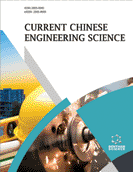Abstract
Ultrasonic Additive Manufacturing (UAM) is an innovative process technology that uses sound to combine layers of metal produced from foil stocks. The variation seen in UAM from other AM techniques is that metals are not melted but joined by ultrasonic welding instead. This technique uses high-frequency vibration to bond the surfaces of metal foils while the metal remains firm. The addition of foils by stacking one on the other by this welding technique leads to the creation of solid parts. This method creates high-density metallurgical bonds without melting the metals. This proves to be advantageous, as it avoids changes in grain size, phases, and precipitation reactions. It also aids in bonding dissimilar metals without creating any brittle intermetallic bonding. UAM provides a major application of embedding electronics in solid metal parts to fabricate microelectronics systems like micro-processors, telemetry, and sensors.
Keywords: Additive manufacturing, Alloys, Applications, CAD model, Ceramics, CNC, Dissimilar metals, Layered manufacturing, Metals, Material compatibility, Microprocessor, Multi-materials, Rapid prototyping, Sensors, Solid-state, Telemetry, Ultrasonic, Vibration amplitude, Weld force, Weld speed, Welding.






















